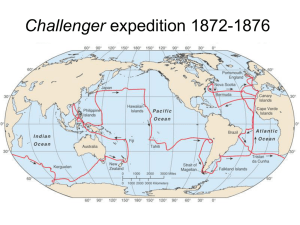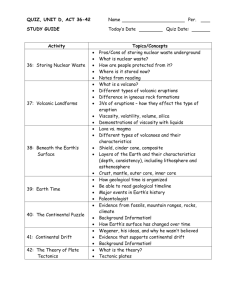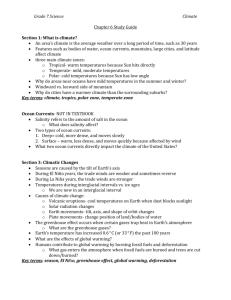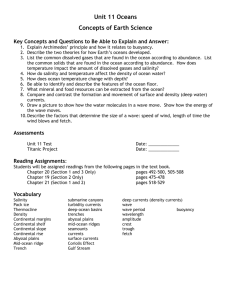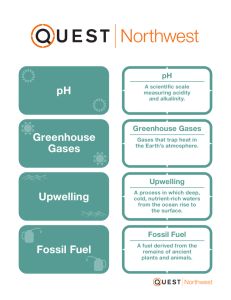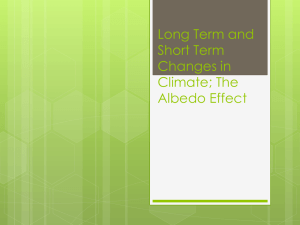8.9: Natural Changes in Climate
advertisement
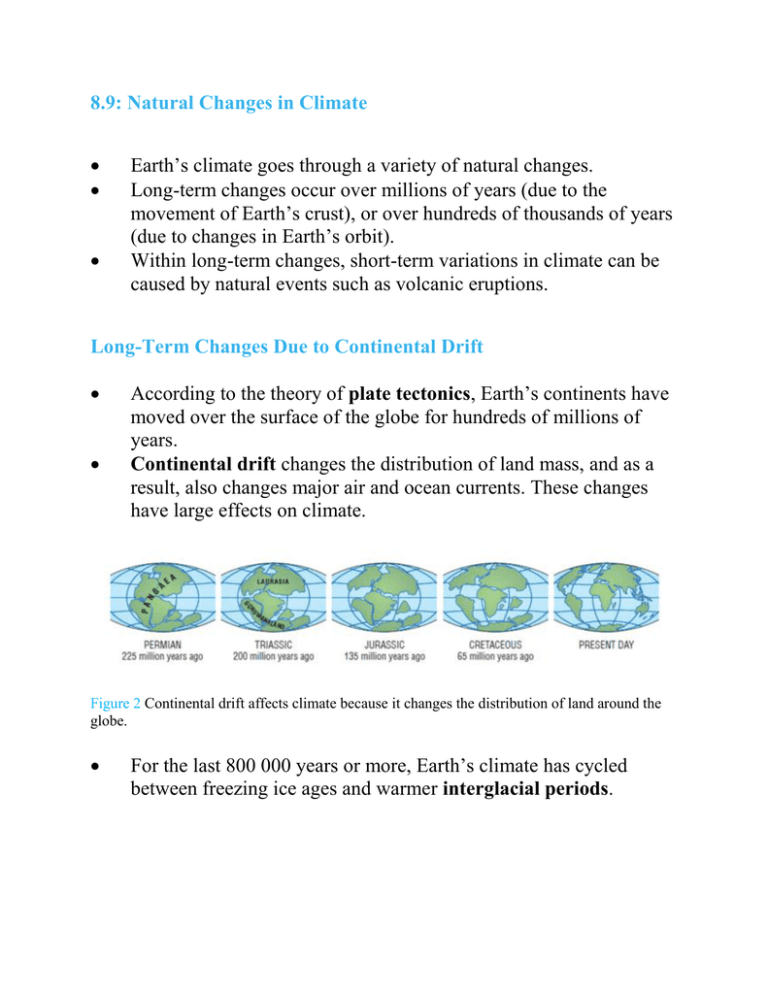
8.9: Natural Changes in Climate Earth’s climate goes through a variety of natural changes. Long-term changes occur over millions of years (due to the movement of Earth’s crust), or over hundreds of thousands of years (due to changes in Earth’s orbit). Within long-term changes, short-term variations in climate can be caused by natural events such as volcanic eruptions. Long-Term Changes Due to Continental Drift According to the theory of plate tectonics, Earth’s continents have moved over the surface of the globe for hundreds of millions of years. Continental drift changes the distribution of land mass, and as a result, also changes major air and ocean currents. These changes have large effects on climate. Figure 2 Continental drift affects climate because it changes the distribution of land around the globe. For the last 800 000 years or more, Earth’s climate has cycled between freezing ice ages and warmer interglacial periods. Long-Term Cycles in Climate Figure 4 Graph of changes in Earth’s average temperature over the past 400 000 years. The values on the y-axis represent deviations from Earth’s average temperature today. Notice that major changes in temperature happen in regular cycles. Warm interglacial periods occur about every 100 000 years. According to the Milankovitch theory, these cycles are triggered by three changes in Earth’s orbit around the Sun: Today, Earth is in a warm interglacial period. Eccentricity: The shape of Earth’s orbit varies in a cycle of 100 000 years. Tilt: Earth tilts back and forth over a cycle of about 41 000 years. Precession of tilt (wobble): As it spins, Earth slowly wobbles in a cycle over 26 000 years. Short-Term Variations in Climate Small variations in climate occur over tens of years to hundreds of years. These variations can be caused by volcanic eruptions, small changes in the Sun’s radiation, and changes in the circulation of air and ocean currents. Volcanic eruptions spew rocks, dust, and gases high into the atmosphere, blocking radiation from the Sun. As a result, Earth temporarily cools down. If the amount of radiation from the Sun drops slightly, Earth climate cools down. Similarly, if the Sun radiates slightly more energy, Earth’s climate warms up. Changes to the ocean’s thermohaline circulation may cause abrupt changes in climate, although this phenomenon is not fully understood. Some changes in air and ocean currents occur regularly, such as El Niño Figure 8 Red arrows represent warm water currents. (a) Normally, the west coast of South America is cold and dry, due to a cold ocean current nearby. (b) During an El Niño event, changes to prevailing winds affect the movement of ocean water. The west coast of South America receives warmer, wetter weather. Check Your Learning, questions 1 – 8, pg. 353
